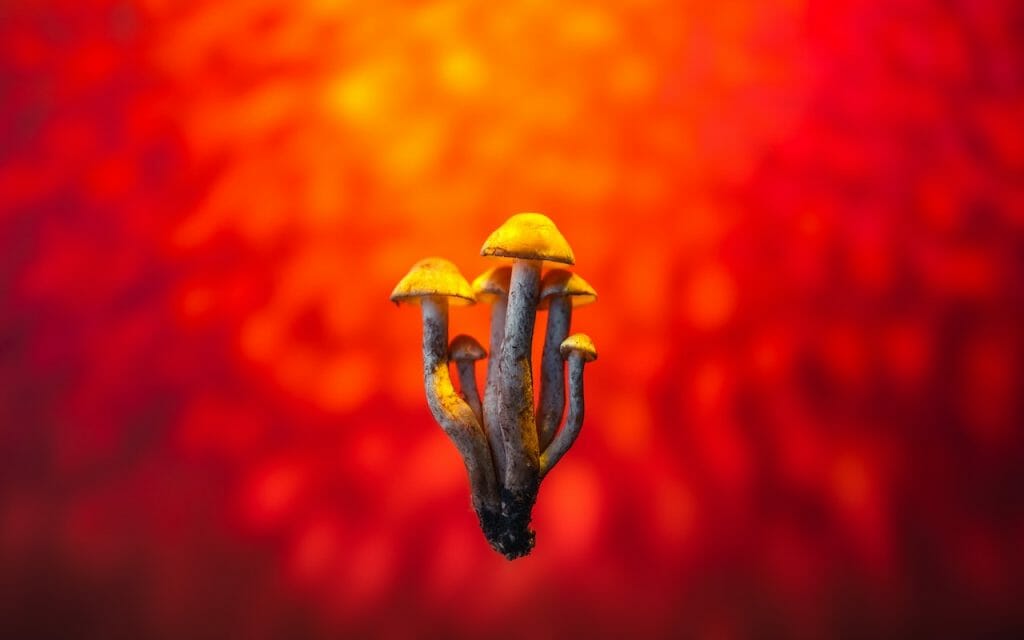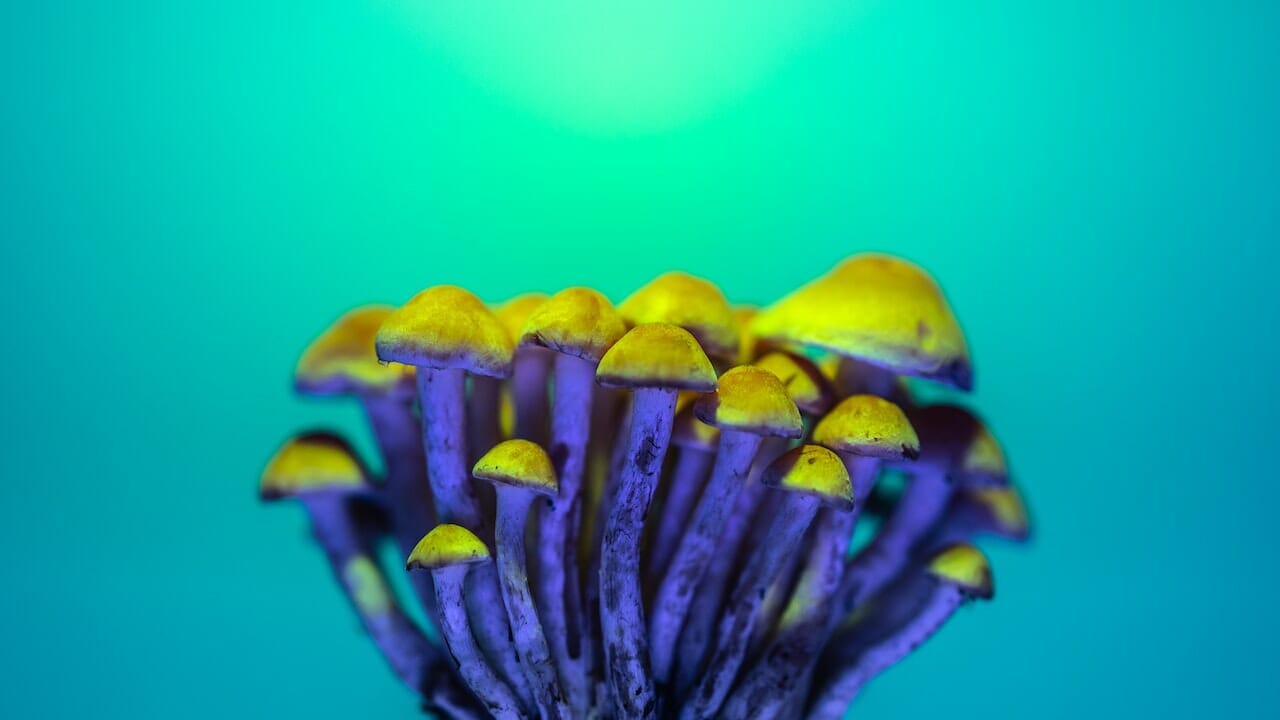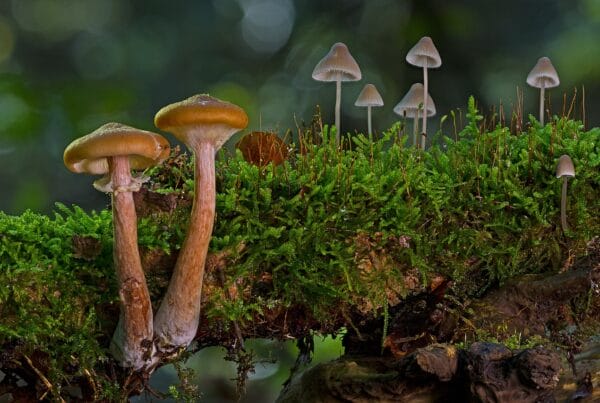Lysergic Acid Diethylamide (LSD) is a highly effective hallucinogen that has been extensively studied as a psychedelic substance. Initially popular for recreational use, LSD has evolved into a psychoactive compound that may hold mental health benefits. This change in perspective has made way for further exploration into the effects of LSD in more palatable forms, like LSD edibles.
Key Takeaways:
- LSD, a powerful hallucinogen, originates from the ergot fungus.
- LSD shares similarities with psilocybin and interacts with the 5-HT2A receptors.
- LSD can induce changes in vision, mood swings, ego dissolution, and pseudo-hallucinations.

Comprehending LSD
LSD is an incredibly strong hallucinogen capable of dramatically altering a person’s perception of reality and intensely distorting their senses. LSD is derived from “ergot,” a type of fungus that grows on rye and other grains.
On the molecular front, LSD is a complex component of the ergoline family. It consists of a bicyclic hexahydroindole group and a bicyclic quinoline group (lysergic acid). The term ‘Lysergic Acid Diethylamide’ is derived from the functional group connected to its nucleus. LSD’s structure bears resemblance to other ergoline alkaloids, like ergotamine, found in the ergot fungus Claviceps purpurea, and the neurotransmitter serotonin.
The Influence of LSD
Upon consumption, LSD permeates the brain and initiates chemical reactions that can persist for numerous hours. LSD could induce the following short-term effects:
- Erratic mood fluctuations
- Distortion of perception
- Vertigo
- Decreased appetite
- Impaired motor control
The Benefits What are the Benefits of Using LSD?
The benefits of LSD are diverse and largely dependent on the dose consumed. The majority of research concentrates on the advantages associated with the intake of smaller quantities of this psychedelic compound. Here, we explore the potential positive impacts of LSD consumption.
Pain Management and Neural Development
Findings from Maastricht University suggest that a single microdose of LSD can induce pain-reducing effects which may persist for at least five hours or longer.
In the Cold Pressor Test, where participants immerse their hands in 3°C (37.4°F) water for an extended period, those who took 20 mg of LSD managed to keep their hands submerged 20% longer than those who didn’t. Additionally, they reported feeling less pain and discomfort.
Additionally, LSD can foster the development and growth of the brain’s 86 billion neurons. Moderate LSD doses, ranging from 5 to 20 ug, increase the levels of BDNF in blood plasma. This is crucial as mood disorders like depression, often associated with neuroplasticity issues, might be mitigated due to LSD’s beneficial effects on neural health.
Boosts Mental Health
Dr. Robin Carhart-Harris from Imperial College London introduced the entropic brain hypothesis. This theory posits that mental health disorders can originate from rigid thought patterns, sustained by an overly active default mode network (DMN). Psychedelic substances like LSD can disrupt the DMN, elevate brain entropy, and aid the dissolution of detrimental neural pathways while promoting the formation of beneficial ones.
A study involving more than 1,000 microdosers reported a decrease in depression. Another large-scale cross-sectional study found a reduction in negative moods and harmful attitudes, coupled with an enhancement in open-mindedness and cognition.
Addiction Treatment
A meta-analysis of randomized-controlled clinical trials using LSD in psychiatry demonstrated its highest effectiveness in treating alcohol dependency. This result is further corroborated by the positive outcomes reported by numerous patients treated for alcoholism by Humphrey Osmond and at the Spring Grove Hospital Centre during the 1950s and 1960s.
Relief from Anxiety and Depression at Life’s End
Dr. Peter Gasser’s research has shown that using LSD in psychotherapy can significantly reduce anxiety in terminal cancer patients concerning their end-of-life phase, and can even improve their subjective life quality. Currently, a Phase 2 trial is being conducted to explore if LSD therapy could have a similar effect on depression.
Demystifying LSD Edibles: Their Ingredients and Manufacturing Process
LSD edibles are food or beverage items infused with the psychedelic substance LSD. These edibles come in a wide variety of formats, including but not limited to chocolates, candies, baked goods, and even unique products like LSD mints.
What’s Inside
- LSD: This is the active component that produces hallucinogenic effects. It is carefully calculated and included in the edible.
- Edible Base: The LSD is usually dissolved or mixed into a consumable medium like a gummy, candy, sugar cube, or other ingestible products. These mediums act as the carrier for the hallucinogenic compound.
- Flavouring and Ingredients: The specific edible product might contain flavorings, sweeteners, and other components to enhance the taste and texture. These could include natural or artificial flavorings, colors, and sugars, and can greatly vary.
Production Process:
- LSD Synthesis: The process starts with the chemical production of LSD. This requires extensive knowledge of organic chemistry and the necessary chemicals, equipment, and a laboratory setting.
- Liquid Formulation: Once LSD is synthesized, it is usually transformed into a liquid form by dissolving it in a solvent. This liquid becomes a concentrated LSD solution.
- Infusion: The liquid LSD is then infused into an edible medium such as gummy candies, sugar cubes, or blotter paper. The chosen medium absorbs the liquid, making it ready to deliver the LSD orally.
Experiencing the Psychedelic Effects of Psychoactive Compounds in LSD Edibles
LSD produces intense visual effects. Colors seem more vivid, objects may seem to have halos or rainbows around them, and shapes can transform. Users may experience visual stimuli whether their eyes are open or closed.
LSD can transform your perception of self and your environment, inducing a variety of mental states. Your thoughts might become clear and meaningful or they might become disjointed. It can also alter how you perceive time, distance, and your body image. The boundary between self and the outside world might become blurred. Some users have reported synesthetic experiences, such as seeing music or hearing colors.
Suggested LSD Products
There are countless LSD edibles available, but it’s vital to buy from a trusted dispensary. You need to be certain that the edibles you get actually contain LSD, not other substances like PCP, ecstasy, or ketamine.
Deadhead Chemist – LSD Infused Gummies
Deadhead Chemist offers LSD-infused edibles, with each gummy containing 100 micrograms of LSD and available in a variety of flavors. Each package contains a single gummy that has demonstrated potential in assisting individuals with conditions such as obsessive-compulsive disorder (OCD), post-traumatic stress disorder (PTSD), alcohol addiction, depression, and cluster headaches.
Deadhead Chemist – Mint Tea
Deadhead Chemist’s raspberry mint tea provides a more pleasant and tasty way to experience the effects of LSD. LSD and other psychedelics mimic the serotonin neurotransmitter, enhancing the brain’s flow state.
Earthly Delights – Candy Flips
Candy flipping became popular in the rave scene of the late 80s. Today, thrill-seekers and party-goers continue to enjoy the combination of these two powerful substances. Users often report deep feelings of love and unity, along with captivating visual effects like intensified colors, object morphing, and complex geometric patterns.
Concluding Remarks
LSD has a historical connection with life-altering experiences. With a deeper scientific understanding of this substance, its popularity has grown, and the introduction of LSD edibles offers a fresh perspective for users. These appealing indulgences have become
Explore the world of LSD in a safe and enjoyable manner with controlled doses.
As the leading supplier of first-rate shrooms online in Canada, Shrooms Online Canada presents an extensive array of LSD-enhanced edibles and cannabis products. Browse our collection at your ease, add your favored items to your cart, and unwind at home while we handle the delivery. We also provide a diverse range of psilocybin shrooms, edibles, beverages, and capsules for your comfort. Remember to check out our LSD delivery page for additional details!
Frequently Asked Questions
What sets LSD apart from psilocybin?
FEATURES LSD PSILOCYBIN Source Semi-synthetic chemical compound Naturally occurring in fungi Available Forms Tabs, microdots, liquid, gummies, blotter paper Dried mushrooms, capsules, teas, chocolates Potency Highly potent, microgram doses (ug) Varies based on mushroom species and preparation Onset and Duration Quick onset (15-60 minutes), short duration (3-5 hours) Slower onset (30-60 minutes), moderate duration (4-6 hours)
How can unpleasant experiences with LSD be avoided?
- Choose Your Setting Wisely
- Prepare Your Mental State
- Start with a Small Dose
- Ensure a Trip Supervisor is Present
- Create a Peaceful Atmosphere
- Use Deep Breathing and Grounding Techniques
- Accept and Release
How long do the effects last?
The effects of the substance will begin to show between 30-60 minutes after ingestion. Individuals with a higher sensitivity to psychedelics might start to feel the effects In just 15 minutes, you will start to notice the effects. You will be aware if you’re under the influence of acid after about an hour. The pinnacle of your trip will occur approximately three hours into your experience. It may seem like time is slowing down, and hallucinations may occur.
Hold on tight, it’s not unusual to feel detached from reality at this stage. The peak phase endures between 3 and 5 hours, after which the descent phase continues for an additional 3 to 5 hours.
How does LSD interact with the human body?
LSD primarily engages with the brain’s serotonin system by adhering to and stimulating the 5-HT2A receptor. This engagement sparks a chain of neurochemical and physiological responses. The effects of LSD, which can differ greatly, can be shaped by certain factors.
Does LSD come in forms other than edibles?
Yes, it does. LSD is available in a variety of forms. The four primary types of LSD products are blotter paper, liquid solutions, tablets/microdots, and gelatin sheets.
Suggested Readings:
| FEATURES | LSD | PSILOCYBIN |
| Source | Semi-synthetic chemical compound | Naturally occurring in fungi |
| Available Forms | Tabs, microdots, liquid, gummies, blotter paper | Dried mushrooms, capsules, teas, chocolates |
| Potency | Highly potent, microgram doses (ug) | Varies based on mushroom species and preparation |
| Onset and Duration | Quick onset (15-60 minutes), short duration (3-5 hours) | Slower onset (30-60 minutes), moderate duration (4-6 hours) |





